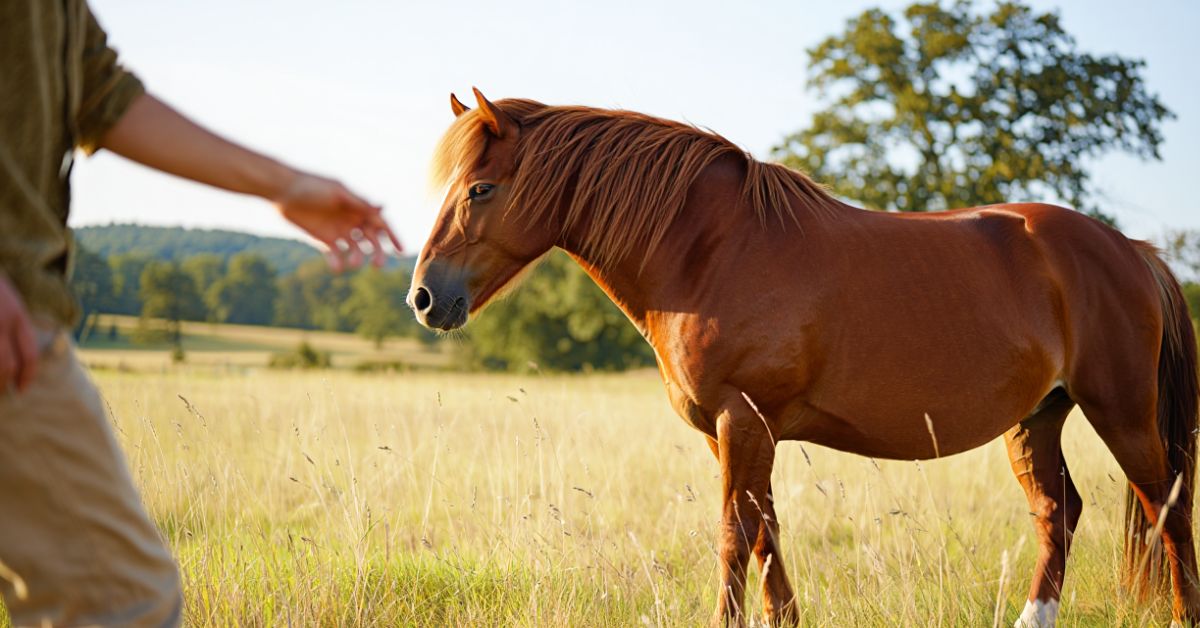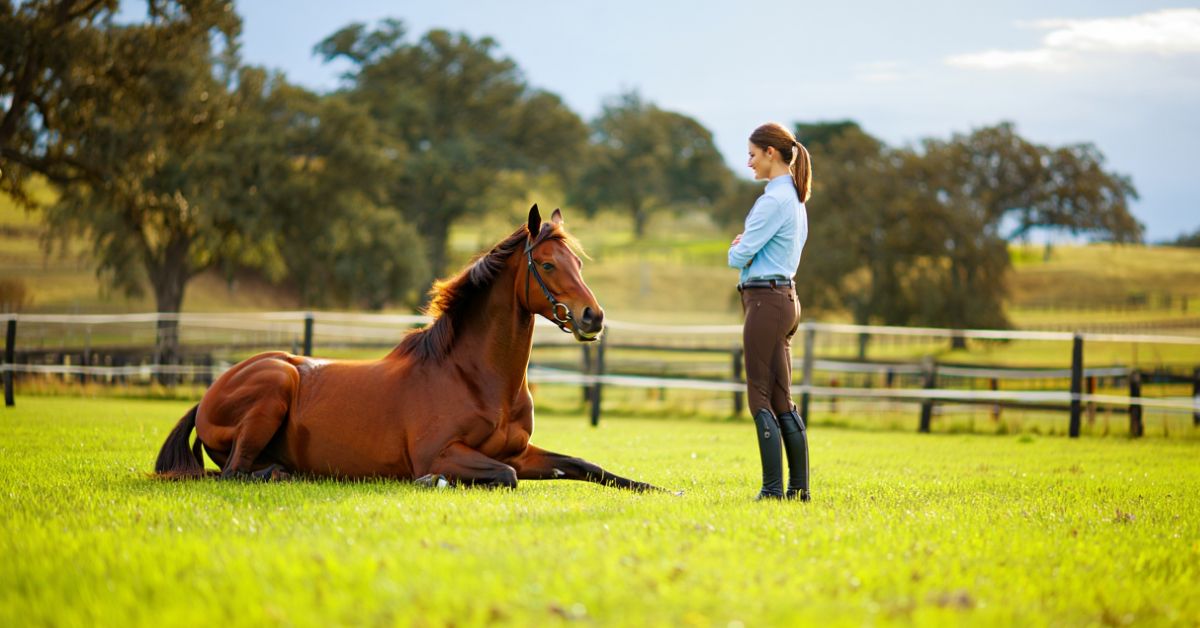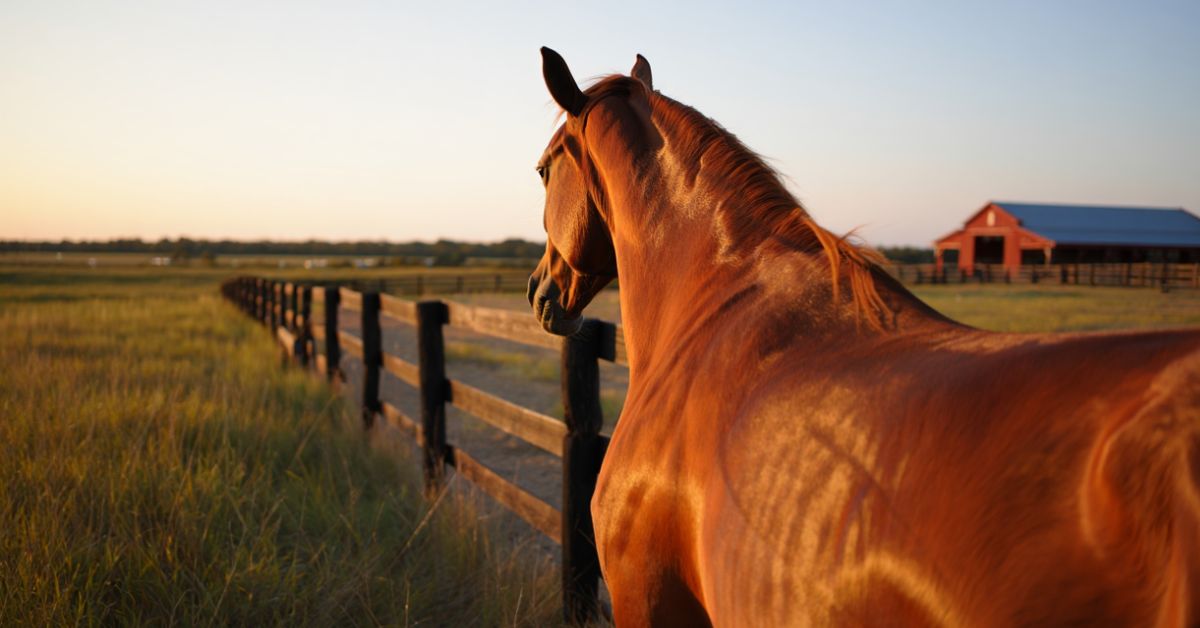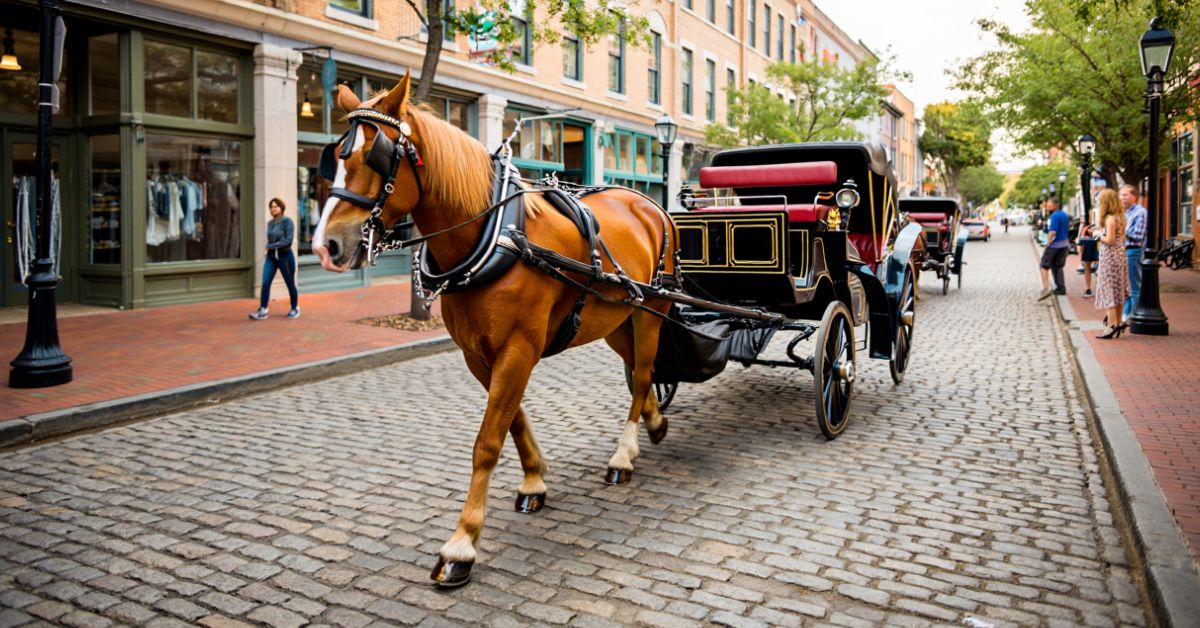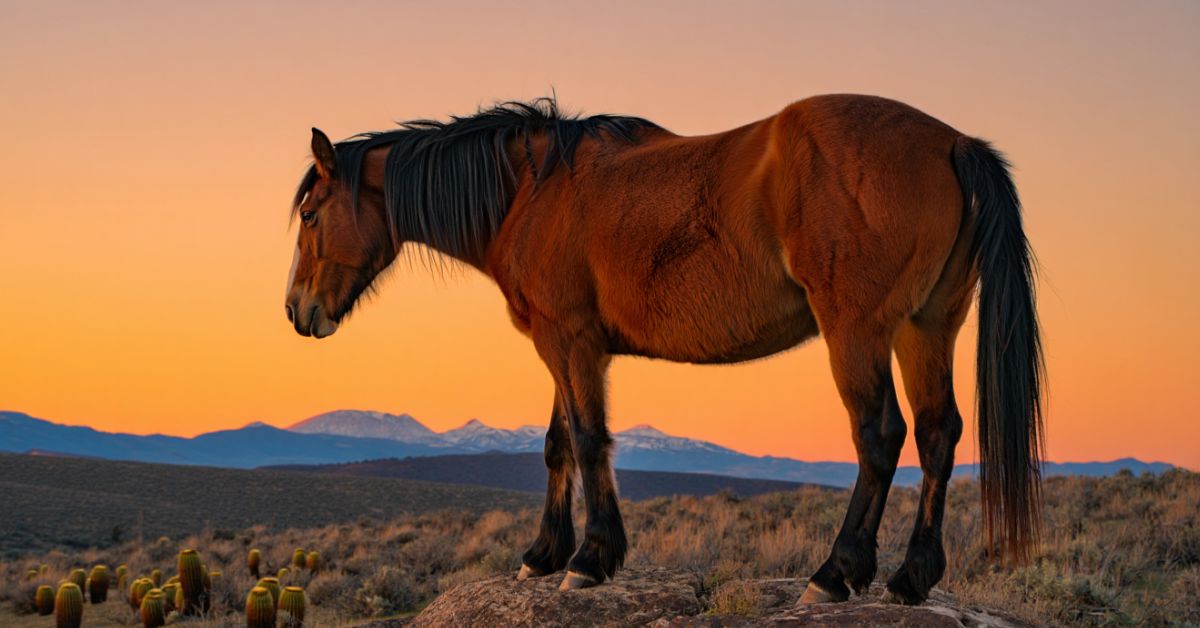
How Long is a Horse Race Track: Complete Guide to Racecourse Dimensions
Ever wondered about the horse racing track length as you watch those magnificent thoroughbreds thunder around the bend? 🐎 Whether you're a seasoned racing enthusiast or someone who simply appreciates the beauty of these athletic competitions, understanding racecourse dimensions adds depth to your appreciation of the sport.
Standard track measurements vary significantly depending on the type of racing, surface, and location. Most oval race tracks in North America measure one mile (1.6 kilometers) in circumference, though this can range from as short as half a mile to as long as 1.5 miles. The length of a racetrack directly impacts racing strategy, horse selection, and the thrilling spectacle we witness from the grandstands.
From the iconic Kentucky Derby track length of 1.25 miles to the challenging Grand National course length of over 4 miles, each track tells its own story. Understanding these measurements helps you appreciate why certain horses excel at different venues and distances, much like how our carefully curated equestrian jewelry at Dream Horse reflects the unique spirit of each horse lover who wears it.
Chapter 1: Understanding Standard Race Track Measurements 📏
The world of horse racing track length is more complex than you might initially imagine. Standard track measurements have evolved over centuries, influenced by tradition, geography, and the practical needs of the sport. Most people assume all tracks are the same, but that's far from reality!
In North America, the typical racecourse sizes center around the one-mile oval configuration. This mile track has become the gold standard, measuring exactly 5,280 feet or 1,609 meters in circumference. However, variations in track length are common and strategically important.
Furlong measurements form the backbone of racing terminology. One furlong equals 220 yards or 660 feet, and most race distances are described in furlongs. A standard mile track therefore measures eight furlongs in circumference. This system dates back to medieval times when a furlong represented the length of a furrow in a plowed field.
The race track circumference affects everything from horse breeding decisions to betting strategies. Shorter tracks favor speed horses who can maintain their pace around tighter turns, while longer tracks often benefit horses with superior stamina. This is why understanding racecourse dimensions enhances your appreciation of each race's unique challenges.
Track curvature plays a crucial role in determining the actual racing surface length. Tighter curves mean horses travel a shorter distance on the inside rail compared to those running wide. Professional tracks account for this in their measurements, ensuring fair competition regardless of running position.
The Science Behind Track Design
Track layout and design incorporates sophisticated engineering principles. Modern racecourses use precise surveying equipment to ensure accurate measurements, while historical tracks sometimes vary from their stated distances due to less precise construction methods.
Calculating track length involves more than simple geometry. Factors like banking angles, surface elevation changes, and rail positioning all influence the final measurements. At Dream Horse, we appreciate this attention to detail – it's the same precision we apply when crafting our equestrian jewelry collections, ensuring each piece meets the exacting standards our customers deserve.
Chapter 2: Types of Race Tracks and Their Specific Lengths 🏁
Thoroughbred Racing Tracks
Thoroughbred racing tracks represent the pinnacle of horse racing track length standardization. These venues typically feature oval race tracks measuring one mile in circumference, though significant variations exist based on historical development and available land.
The homestretch length on most thoroughbred tracks measures approximately 1,000 to 1,200 feet, providing ample space for dramatic finishing kicks. This straightaway distance allows horses to reach their maximum speed while giving jockeys room to maneuver in the final moments of competition.
Turf track length often differs from the main dirt surface. Many racecourses feature separate grass courses that may measure slightly different distances due to the space required for proper turf maintenance and rail positioning. The turf track length at Churchill Downs, for example, measures 7.5 furlongs compared to the main track's one-mile configuration.
Harness Racing Tracks
Harness racing tracks follow different measurement standards, typically featuring half-mile or five-eighths mile configurations. These racecourse dimensions accommodate the unique needs of standardbred racing, where horses pull drivers in lightweight sulkies rather than carrying jockeys on their backs.
The shorter length of a racetrack in harness racing creates more turns per mile, requiring different skills from both horses and drivers. This format produces exciting, tactical racing where positioning and timing matter more than pure speed.
Quarter Horse Racing Tracks
Quarter horse racing tracks often utilize straight-line courses for sprint races, measuring 220 yards (one furlong) to 440 yards (quarter-mile). These race distance (horse racing) formats showcase the explosive acceleration that quarter horses are famous for, much like how our equestrian accessories at Dream Horse are designed to showcase the unique spirit of each horse enthusiast.
Some facilities feature both straight and oval race tracks to accommodate different racing styles and distances. The versatility required for such multi-purpose venues demonstrates the complexity of modern track layout and design.
Chapter 3: Famous Race Tracks and Their Iconic Dimensions
The most prestigious racing venues worldwide each tell their story through their unique racecourse dimensions. These legendary tracks have hosted countless memorable moments, their specific measurements becoming part of racing lore.
Kentucky Derby track length measures exactly 1.25 miles (10 furlongs), making it one of the longer classic races. Churchill Downs' main track circumference of one mile creates a challenging test for three-year-old thoroughbreds, requiring both speed and stamina. The track's relatively tight turns add another layer of complexity, favoring horses who can handle close quarters and tactical positioning.
The Preakness Stakes track length at Pimlico Race Course covers 1.1875 miles (9.5 furlongs), making it the shortest of the Triple Crown races. This standard track measurements difference might seem minimal, but it significantly impacts race strategy and outcomes. Pimlico's main track measures exactly one mile in circumference, with unique characteristics that have influenced racing for over 150 years.
Belmont Stakes track length presents the ultimate test at 1.5 miles (12 furlongs), earning its nickname as "The Test of the Champion." Belmont Park's main track measures 1.5 miles in circumference, making it one of the largest oval race tracks in North America. The expansive straightaway distance of over 1,100 feet allows for spectacular stretch runs that have become legendary in racing history.
International Racing Dimensions
Royal Ascot track length showcases European racing traditions with its straight mile course and round course measuring 1.75 miles in circumference. These international race track lengths reflect different racing philosophies and historical development patterns compared to North American ovals.
The Grand National course length at Aintree stretches over 4.25 miles with 30 challenging obstacles, representing the extreme end of steeplechase course length measurements. This epic test combines distance, jumping ability, and tactical racing in ways that create unforgettable sporting drama.
European tracks often feature longer race track circumference measurements, with courses like Longchamp in Paris measuring 1.875 miles around. These variations in track length create diverse racing challenges that test different aspects of equine athleticism.
As Winston Churchill once said, "There is something about the outside of a horse that is good for the inside of a man." This sentiment captures why we're passionate about both the sport of racing and creating beautiful equestrian-inspired pieces at Dream Horse that celebrate this special relationship between humans and horses.
Surface Variations and Their Impact
Dirt track length measurements remain consistent regardless of surface composition, but different materials can affect racing dynamics. Traditional dirt surfaces, synthetic all-weather tracks, and natural turf each present unique challenges while maintaining standard distance measurements.
All-weather track length follows the same measurement principles as traditional surfaces, but these synthetic materials often provide more consistent racing conditions throughout different weather patterns. Many modern facilities incorporate multiple surface types while maintaining precise standard track measurements across all configurations.
Chapter 4: Factors Affecting Track Length and Measurement Precision
Understanding factors affecting track length requires examining both historical development and modern precision standards. Many older tracks were built using less sophisticated surveying equipment, leading to minor variations from stated distances that persist today.
Track maintenance and length intersect in fascinating ways. Regular surface maintenance, rail adjustments, and drainage improvements can minutely affect actual racing distances. Professional racing organizations employ precise measurement techniques to ensure competitive integrity across all events.
Measurement Standards and Technology
Modern calculating track length involves GPS technology, laser measurement systems, and sophisticated surveying equipment. These tools ensure that racecourse dimensions meet exact specifications required for fair competition and accurate record-keeping.
Starting gate position affects actual race distances, particularly in sprint events where gate placement can vary by several yards depending on track configuration and safety requirements. Race officials carefully position starting points to ensure advertised distances remain accurate.
The transition from metric vs. imperial track measurements creates interesting challenges for international racing. While North American tracks primarily use imperial measurements (miles, furlongs, yards), many international venues utilize metric systems, requiring careful conversion for comparative purposes.
Environmental and Geographic Influences
Geographic constraints often influence track layout and design decisions. Available land, topography, and local climate conditions all impact final racecourse dimensions. Urban tracks may feature tighter configurations due to space limitations, while rural facilities can accommodate larger oval race tracks.
Track surface impact on length extends beyond simple measurement considerations. Different materials require varying rail positions, drainage systems, and maintenance access, all of which can subtly affect racing surface dimensions.
Climate considerations influence track curvature and banking decisions. Tracks in regions with significant temperature variations must account for expansion and contraction in their measurement calculations, ensuring year-round accuracy.
According to industry statistics from 2023, approximately 85% of North American thoroughbred tracks maintain one-mile main track configurations, while 15% feature alternative distances ranging from 7/8 mile to 1.25 miles in circumference.
Chapter 5: Specialized Racing Formats and Their Unique Length Requirements
Steeplechase and Obstacle Racing
Steeplechase course length varies dramatically from traditional flat racing measurements. These challenging events combine distance racing with jumping obstacles, creating unique measurement requirements that extend far beyond simple race track circumference calculations.
Obstacle course dimensions must account for safe approach and landing zones around each jump, effectively extending the total course area well beyond the basic racing surface. The famous Grand National course exemplifies this complexity, with its 4.25-mile distance incorporating 30 formidable obstacles that demand precise spacing and measurement.
Jump racing courses often feature irregular shapes rather than simple ovals, with variations in track length that follow natural terrain features. These courses require specialized measurement techniques to ensure accurate distance calculations despite their non-uniform configurations.
Specialty Distance Racing
Shortest race tracks in professional racing typically measure around 2.5 furlongs (550 yards) for quarter horse sprints, while longest race tracks can exceed 4.5 miles for extreme endurance events. These extremes showcase the remarkable diversity within horse racing track length standards.
Paddock to post distance becomes critically important for longer races, where horses must travel significant distances from preparation areas to starting positions. This logistical consideration influences overall facility design and race day scheduling.
Modern Innovations in Track Design
Contemporary track layout and design incorporates advanced materials science, drainage engineering, and safety technologies that previous generations couldn't imagine. These innovations maintain traditional standard track measurements while dramatically improving racing surfaces and safety standards.
Synthetic surfaces have revolutionized all-weather track length standardization, providing consistent racing conditions regardless of weather while maintaining precise measurement standards. These surfaces often require different maintenance protocols that can affect long-term dimensional stability.
Horse racing terminology (length) continues evolving with technological advances. Terms like "GPS-verified distance" and "laser-measured circumference" reflect modern precision standards that ensure fair competition across all racing formats.
The integration of timing technology with track measurement creates unprecedented accuracy in distance verification. Modern tracks can measure and verify distances to within inches, ensuring that racecourse dimensions meet exact specifications for championship-level competition.
Recent developments in track surface technology, particularly since 2020, have focused on maintaining traditional mile track configurations while incorporating advanced drainage and cushioning systems that enhance both safety and performance without affecting measurement standards.
As renowned trainer Bob Baffert once observed, "The track is the stage where dreams are made and broken – every inch matters." This philosophy drives our commitment at Dream Horse to precision and quality in everything we create, from our meticulously crafted equestrian jewelry to our carefully curated horse-themed decorations that celebrate the sport's rich traditions.
Frequently Asked Questions About Horse Racing Track Length
How long is a standard horse race track?
Most standard horse racing tracks in North America measure one mile (8 furlongs or 1,609 meters) in circumference. However, racecourse dimensions can vary from half-mile tracks to 1.5-mile configurations depending on the facility and racing format.
What is the difference between dirt track length and turf track length?
Dirt track length and turf track length at the same facility often differ slightly due to rail positioning and maintenance requirements. Turf courses are typically positioned inside or outside the main dirt track, creating measurement variations of 50-200 yards in total circumference.
How do furlong measurements work in horse racing?
Furlong measurements represent the standard unit for racing distances, with one furlong equaling 220 yards or 660 feet. A mile track measures exactly eight furlongs in circumference, making this system essential for understanding race distance (horse racing) terminology.
Why do some tracks have different lengths for different types of racing?
Types of race tracks serve different racing disciplines with unique requirements. Thoroughbred racing tracks typically feature one-mile ovals, while harness racing tracks often measure 5/8 or 1/2 mile, and quarter horse racing tracks may include straight-line sprint courses ranging from 220 to 440 yards.
What factors can affect the actual length horses run during a race?
Track curvature, running position, and starting gate position all influence the actual distance horses travel. Horses running on the outside of turns cover more ground than those on the rail, while straightaway distance and homestretch length provide opportunities for position changes that affect total distance covered.
Express your passion for the sport of kings with Dream Horse's exclusive equestrian jewelry collection – where every piece celebrates the timeless connection between humans and horses. Discover our curated selection of horse-themed decorations that bring the excitement of the racetrac

